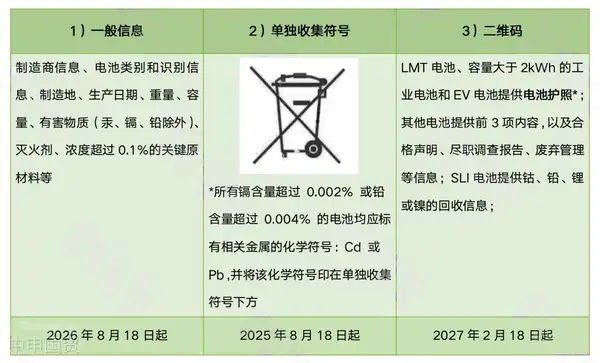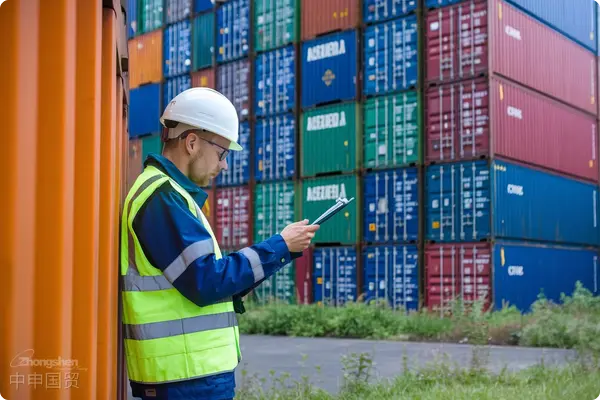- Shanghai Zhongshen International Trade Co., Ltd. - Two decades of trade agency expertise.
- Service Hotline: 139 1787 2118
The new EU Battery Law has become a regulation that enterprises urgently need to understand and follow, whether they are manufacturers, importers or distributors. This new regulation not only includes restrictions on hazardous substances, but also covers many aspects such as carbon footprint and recycling requirements. Chinese enterprises exporting battery - containing products such as batteries and electric vehicles to the EU face many challenges, especially in terms of battery carbon footprint. This is not a simple compliance game, but a global cooperation involving multiple dimensions of environment, safety and economy. Reading the regulations thoroughly, analyzing them in - depth and making timely rectifications - these are the three - step compliance trilogy that every enterprise needs to keep in mind.

I. Regulatory Background and Purpose
Historical Background of the Regulation:As early as 2006, the EU introduced the guiding document Battery Directive for batteries to improve the environmental performance of batteries. However, with the release and implementation of the EU Green Deal, batteries, as a key driving factor for sustainable development and green travel, require more comprehensive management.
Core Purpose of the Regulation:The new Battery Law aims to comprehensively manage the entire life cycle of batteries circulating in the EU market. It takes into account factors such as the carbon footprint of battery manufacturing, the ethical procurement of raw materials and supply security, and emphasizes that batteries should be safe, sustainable and competitive.
Implementation Time of the Regulation:This new regulation came into effect 20 days after it was published in the Official Gazette on July 28, 2023, that is, it was officially implemented from August 17, 2023.
II. Scope of Application and Responsible Entities of the Battery Law
Scope of Application:This regulation applies to all types of batteries placed on the market or put into use in the EU, including electric vehicle batteries (EV batteries), light - duty transport vehicle batteries (LMT batteries), starting/lighting and ignition batteries (SLI batteries), industrial batteries, and portable batteries.
Responsible Entities:In addition to battery manufacturers, importers and distributors, this regulation also applies to suppliers at every stage of battery production, including battery parts and raw material suppliers. In addition, operators involved in battery repair, maintenance or reuse are also included in the scope of liability.
III. Response Requirements of the Battery Law and Enterprise Response Measures
Hazardous Substance Restriction Requirements of the Battery Law
1、歐盟REACH法規的遵守:The new EU Battery Law clearly stipulates that the chemical substances used in all batteries must comply with the use restrictions listed in Annex XVII of the REACH Regulation (Regulation (EC) No 1907/2006).
Heavy Metal Restrictions:In accordance with the EU End - of - Life Vehicles Directive (Directive 2000/53/EC), the use of lead, mercury, cadmium and hexavalent chromium in batteries is strictly restricted.
Specific Compound Restrictions:In addition to the above - mentioned general restrictions, the new Battery Law also lists specific use restrictions on mercury, cadmium, lead and their compounds in Annex I.

Carbon Footprint Requirements of the Battery Law
Carbon Footprint Declaration:According to the new Battery Law, all batteries need to provide a carbon footprint declaration and be labeled with a label indicating the carbon footprint and the corresponding carbon footprint performance level.
Calculation Method:The calculation of the battery carbon footprint should comply with Annex II of the new Battery Law and the latest EU version of the PEF (Product Environmental Footprint) method. This needs to consider the entire life cycle of the battery from raw material acquisition, manufacturing, transportation to waste and recycling.
Functional Unit and System Boundary:The functional unit for carbon footprint accounting is 1 kWh of the total energy provided by the battery system during its service life. The system boundary includes four stages: raw material acquisition and pretreatment, main product production, transportation, end - of - life and recycling.
Time Schedule:The new Battery Law also clarifies the carbon footprint response time for different types of batteries. This is to provide sufficient time for different types of battery manufacturers to adapt to the new regulatory requirements.
Carbon Management and Supply Chain:Given the requirements for battery carbon footprint, battery manufacturers need to pay more attention to their own and supply chain carbon management. This includes, but is not limited to, conducting a comprehensive carbon footprint assessment and management of the supply chain, and cooperating with suppliers to reduce carbon emissions.

Recycling Requirements of the Battery Law
Active Material Recycling Composition:According to the new Battery Law, the active materials containing cobalt, lead, lithium and nickel in the battery should be accompanied by documents stating the proportion of their recycled components. This is a clear requirement aimed at ensuring that batteries can be effectively recycled at the end of their life cycle.
Recycling Composition Proportion Requirements:The regulation clearly stipulates the minimum proportion of recycled components that different types of batteries should reach. For example, for batteries containing cobalt and lithium, it is necessary to clarify to what extent their recycled components can be reused.
Collection Target for Waste Batteries:The regulation also stipulates the minimum collection target for waste batteries by manufacturers. This requirement means that enterprises are not only responsible for production, but also for the recycling of batteries to ensure that batteries can be properly disposed of after use.
Recycling Efficiency and Renewable Material Recycling Level: The regulation also makes corresponding provisions on the battery recycling efficiency and the minimum level of renewable material recycling by recyclers. This is to ensure that the battery recycling process can minimize environmental pollution and resource waste.
Third - Party Verification:To ensure that all recycling requirements are strictly implemented, the regulations also require the verification of the recycling process by a third - party institution. This measure increases the enforceability and traceability of recycling requirements.
Cross - border Recycling Responsibility:For cross - border battery products, such as batteries exported from China to the EU, enterprises also need to meet the EUs recycling requirements and may even need to participate in the EUs recycling system.

Labeling and Marking Requirements of the Battery Law
Clear, Legible Labels:According to the new EU Battery Law, all batteries sold on the EU market need to be affixed with clear, legible and indelible labels. These labels should contain basic information about the battery, such as model, battery composition, place of origin, etc.
QR Code Information:In addition to traditional text labels, the new law also requires that batteries should be accompanied by a QR code to provide more information. The QR code should be able to quickly navigate to a web page containing more detailed information about the battery product.
Carbon Footprint Performance Level:The label of the battery also needs to include the carbon footprint performance level, which is a new requirement. This level is assessed based on the carbon emissions generated during the production and use of the battery.
Recycling and Disposal Information:The battery label should contain information on how to properly recycle and dispose of the battery. This is to ensure that consumers know how to properly handle used batteries, thus reducing the impact on the environment.
Safety Warnings and Instructions: The label should also have warnings and instructions regarding the safe use of the battery, including but not limited to storage conditions, usage restrictions, and under what conditions the battery should not be used, etc.
Compliance Marking:All batteries should also clearly indicate whether they comply with relevant EU regulations and standards, usually achieved through the CE mark.
Supply Chain Information:For batteries involving special raw materials (such as cobalt, lithium, etc.), the label also needs to provide relevant supply chain information to prove that these materials are obtained sustainably and compliantly.
Battery Passport:The new regulations also introduce the concept of a battery passport, which is an electronic document containing all relevant information about the battery. The battery passport should be traceable and contain all information generated from the use of the battery.

Enterprise Response Measures
For Chinese enterprises exporting batteries and electric vehicles and other battery - containing products to the EU, in addition to fully understanding and complying with these new regulations, they also need to carry out substantial preparatory work, including in - depth investigation and management of the supply chain, and timely diagnosis and rectification of existing problems.
Related Recommendations
? 2025. All Rights Reserved. 滬ICP備2023007705號-2  PSB Record: Shanghai No.31011502009912
PSB Record: Shanghai No.31011502009912









